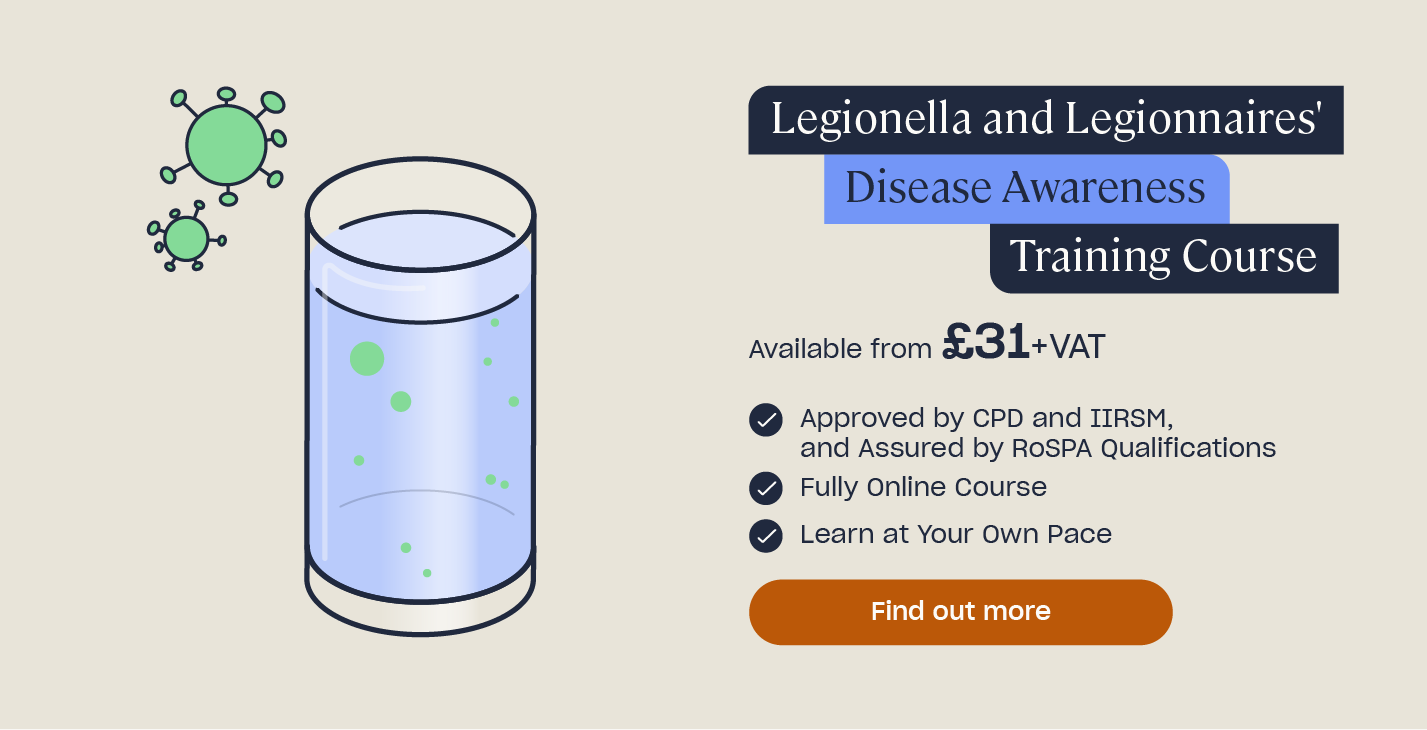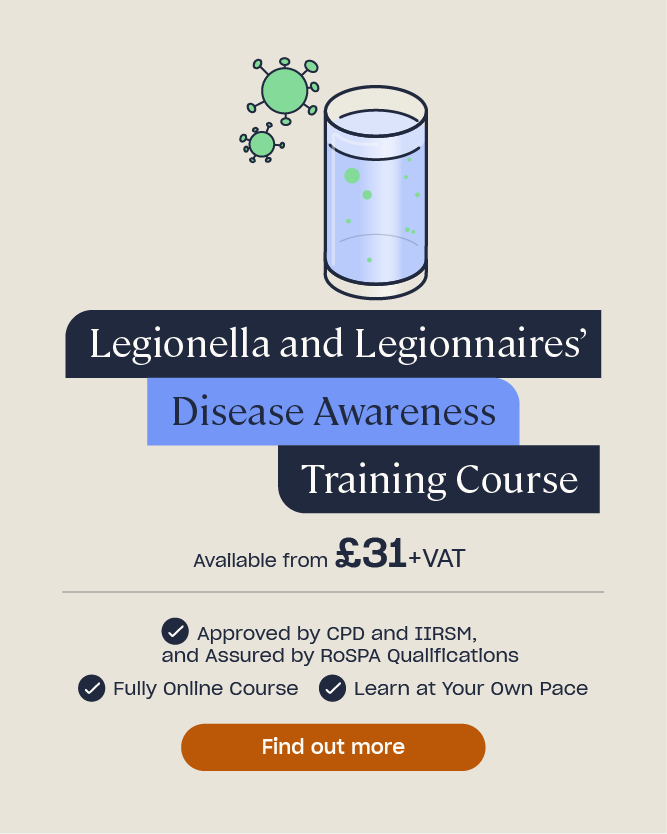What is ACOP L8 and How Does it Apply to Legionella?
Legionella is a type of bacteria that can seriously harm people’s health. Whilst it occurs at very low concentrations in natural water sources (e.g. rivers, lakes and reservoirs), it can also be found in man-made water systems. Inhaling small droplets of water contaminated with Legionella bacteria can cause a number of serious respiratory diseases. These include Pontiac fever, Lochgoilhead fever and, the most serious, Legionnaires’ disease.
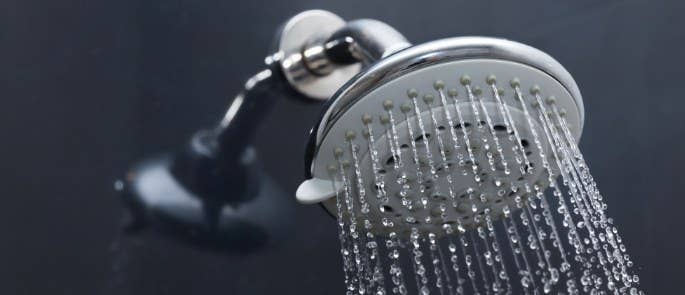
In this article, we will explain the responsibilities of duty holders regarding Legionella and health and safety, particularly in relation to the Approved Code of Practice L8.
What is ACOP L8?
Where water is used in a way which might result in a reasonable risk of exposure to Legionella, there are legal health and safety duties which must be met. The Health and Safety Executive’s Approved Code of Practice (ACOP) L8 gives advice and guidance on how to comply with your legal and regulatory responsibilities in relation to the control of Legionella.
These legal obligations are contained in:
- The Health and Safety at Work etc Act 1974;
- The Control of Substances Hazardous to Health 2002; and
- The Management of Health and Safety at Work Regulations 1999.
ACOP L8 sets out practical guidance on how to meet these legal requirements. You do not have to follow the ACOP L8 guidance and can comply in an alternative way. However, by following the ACOP L8 guidance, your actions will be sufficient to fulfil your legal obligations.
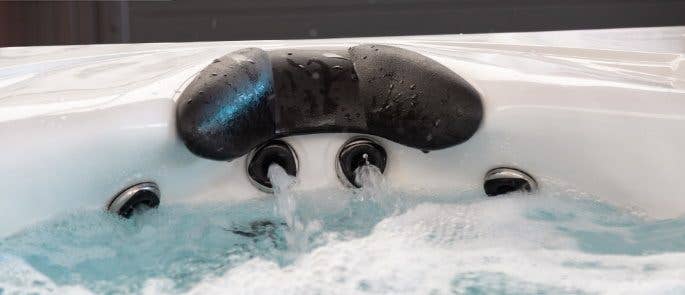
What Guidance Does ACOP L8 Cover?
If you are a duty holder, employer or someone with responsibility for the control of premises e.g. a landlord, you have responsibilities to control and prevent the risk of exposure to Legionella. It is important to be aware of and follow the ACOP L8 guidance. This is both to ensure compliance with health and safety legislation in relation to the risk posed by Legionella and to demonstrate that compliance.
ACOP L8 helps duty holders to understand how to carry out a risk assessment and the key things to look for, as well as examples of control measures that can be implemented to mitigate those risks. Further information about carrying out a risk assessment and control measures is covered later in this article.
Additional technical guidance in relation to Legionella is available in the Health and Safety Executive’s Health and Safety Guidance publications and should be considered alongside ACOP L8:
- HSG274 which includes specific technical guidance on:
- HSG282, which has specific guidance on spa-pools.
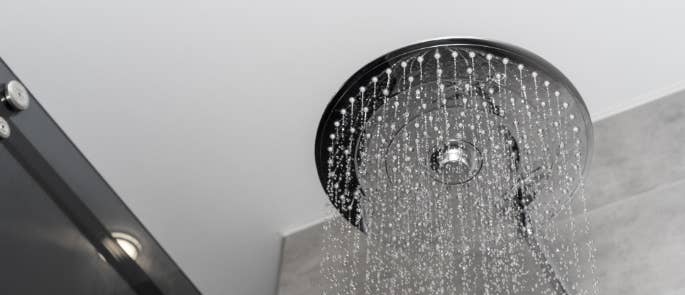
Need Legionella Training?
Need training for Legionella and carrying out a risk assessment? High Speed Training provides an online Legionella and Legionnaires’ Awareness Training course, which is designed for duty holders and contains a module dedicated to carrying out a Legionella risk assessment.
Why is ACOP L8 Important?
ACOPs have a special legal status. You are not required by law to follow the guidance and can meet your statutory obligations in other ways. If, however, you are prosecuted for a breach of health and safety law, and it is shown that you failed to follow the relevant ACOP guidance, you will have to demonstrate that you complied in another way, or a court will find you at fault.
Although it doesn’t actually impose any legal obligations on duty holders, showing that you followed the guidance set out in the Approved Code of Practice provides protection in the event of prosecution under health and safety legislation in respect of the matters covered in the ACOP L8.
In order to comply with your legal duties, duty holders should:
- Identify and assess sources of risk.
- If appropriate, prepare a written scheme for preventing or controlling the risk.
- Implement, manage and monitor precautions.
- Keep records of the precautions.
- Appoint a competent person with sufficient authority and knowledge of the installation to help take the measures needed to comply with the law.
ACOP L8 guidance covers the risk assessment, the role of the responsible person, potential control measures and review of those measures, as well as the obligations on those responsible for the supply of water systems.

Do I Need to Complete an ACOP L8 Legionella Risk Assessment?
All purpose-built water systems will require a risk assessment to be carried out. It’s your responsibility as a duty holder to ensure a competent person carries out that risk assessment. This may be you as duty holder (if you are competent to do so), or another person from your organisation or a consultancy service.
Not all systems will require complex control measures, but a risk assessment will establish what the risks are and what measures are required to manage those risks.
The purpose of the assessment is to identify potential areas of risk within a system and:
- Whether it is possible to avoid the risk of exposure to Legionella; or
- Where that is not reasonably practicable, identify what suitable precautions can be taken to reduce the risk.
The risk assessment demonstrates that you have considered the possible risks and how to prevent or control those risks.
ACOP L8 gives examples of controls which may be appropriate to help prevent the growth of legionella bacteria, including:
- Avoiding water temperatures between 20 °C and 45 °C (bacteria is most likely to grow at this temperature).
- Avoiding water stagnation, which may encourage the growth of biofilm.
- Avoiding materials that harbour bacteria or that provide a source of nutrients for the microbial growth.
- Controlling the release of water spray.
- Keeping the system and the water in the system clean.
- Using water treatment techniques.
- Taking action to ensure the correct and safe operation and maintenance of the water system.
Where there are five or more employees, a written record of the risk assessment must be recorded. However, it is good practice to keep a record, even if you are not required to do so.
The risk assessment should be reviewed regularly and any control measures put in place should be monitored to assess their effectiveness.
In particular, the risk assessment should be reviewed if there are any changes that could affect it. For example:
- New or altered processes or changes to the system.
- Changes to key personnel.
- New employees who need training.
- A reported case of legionellosis linked to the system.
Any employees who may be exposed to Legionella, or who are involved in work that may expose others to Legionella, should be given suitable and sufficient information and training.
More information on carrying out a risk assessment and training is available in other articles on the Hub.
What to Read Next:
- Legionella Control: Managing Water Systems
- Symptoms and Treatment of Legionella and Legionnaires’ Disease
- How to Clean Stagnant Water: Guidance on Managing Legionella Bacteria
- Legionella and Legionnaires’ Awareness Training course


